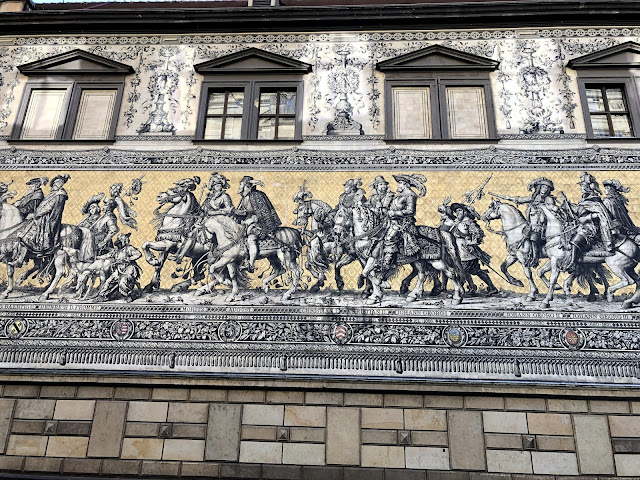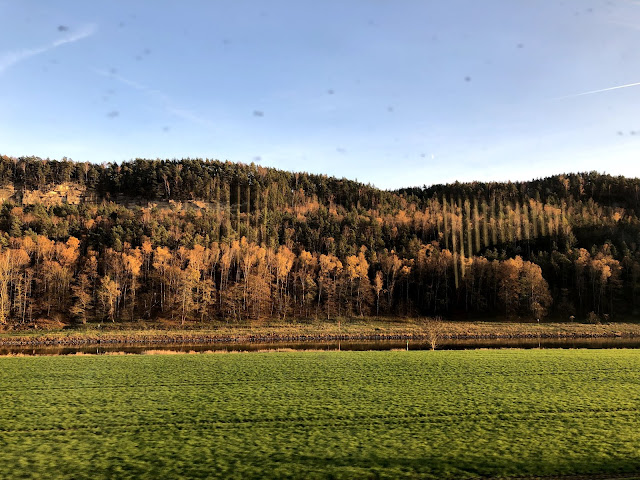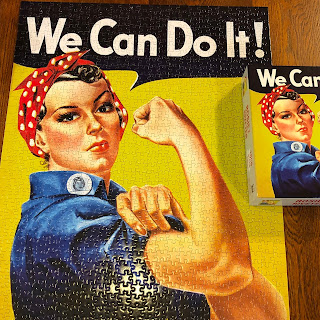Dresden
14 November 2018 Dresden
 |
| Dresden Opera House (rebuilt completed in 1985) |
I did 15,000 steps today. In other news, Dresdin has gone leaps and bounds since WWII and the reunification of Germany.
OK. That was corny. And Dresdin deserves better.
I have been reading a novel set in Prague 1968. I’m currently staying in Prague but today I did a day-trip to Dresden. I really rushed the last two chapters of the book to complete it before my trained stopped at Dresdin, 10 minutes late. I didn’t think that happened in Germany! I still had my reading glasses on when I stepped off the train and wondered why the world was so blurry. Taking them off actually didn’t help that much. I also had a pressing need to go to the toilet.
It was like being at a French public bathroom, since there was a turnstile requiring 1 Euro. I scrounged through my coins. Aha! A “1”. I put the coin through but the turnstile wouldn’t budge. A German man came and waggled a finger in my face, pointing out my coin had gone through to the change dispenser. I put it through again. No go. Frustrated, the German man pointed again at the change dispenser. It was 1 British Pound, not Euro. I had swapped over my notes but not my coins. I huffed away and found a nearby store where I bought much needed bandaids and tissues, resulting in just over 1 Euro in change. Bathroom access was mine!
Then I had to find my tour meeting point, requiring valuable data for Google Maps. It was relatively easy to locate but I made it with only 5 minutes to spare with all the fuss over a toilet and the late train. There were only six of us following Claudia around on this tour: a couple from Brisbane, looking very cold wrapped up in beanies and mittens; a couple from Canada; a German girl just out of school; and myself. The German girl decided when she finished school she needed driving practice so was driving all over Germany, taking English options where possible to improve her fluency and I suspect to just learn more about life. For instance, when we passed some men joking around, Claudia laughed, saying that the men were speaking in a very Saxony German accent which I gathered to be quite crass, or what we would call bogan. The German girl laughed. Her step-father was from Dresden and her mother always picked on his accent, saying he actually did not speak German. So he enrolled himself in a German for Beginners class to obtain himself a certificate that yes, indeed, he could speak Germany for Beginners.
I have been reading a novel set in Prague in 1968. Although the novel itself isn’t very good (it won't be making the return journey), it did give some historical significance to the region. I had no idea when I crossed the border from the Czech Republic to Germany. My passport was not required. There was much written in the novel about this border and the tension it caused (oh so much tension in one particular character, every time she came near officialdom) it seemed so surreal that so much has changed in 1989, with the velvet revolution and then the collapse of the one Communist party system, and thereafter. Similar to the reunification of East and West Germany and the Czech Republic is intertwined with the German changes.
 |
| Inside the dome |
Dresden was bombed severely in WWII. All the beautiful buildings from before, during and after the Baroque period were destroyed. When the GDR took power they were originally going to rebuild the GDR way but somehow they were convinced to rebuild according to the original buildings. It was a slow process with one building at a time faithfully restored. By 1989, the rebuilding had been done well but so so slowly much was left to be done. Suddenly reunification money and private investment spurred the process along and now there are merely two buildings left to be restored. Many buildings have only had the facade restored with completely modern design inside. Some have every iota of the building, inside and out, replicating and incorporating the original. One such example is the Lutheran church. Funny story, not so funny really, about faith in Dresden. Dresden was originally Christian, mainly in the Lutheran sense, but Dresden’s Elector of Saxony, Frederick August I converted to Catholicism so he could become King of Poland. Not that many followed at the time. According to our guide, there are less than 15% of Protestants left, because GDR drove out religious following, but other records tell me otherwise. She also scoffed at the idea that there would ever be a mosque in Dresden, when she was referring to a building that had a dome influenced by the east but not actually a mosque. There are mosques in Dresden, one of which was bombed in 2016 by a German man convicted recently for this crime. According to New World Encyclopaedia (whose credentials I haven’t checked out) the circumstances are rather different to what our guide presented in regards to religion.
Apparently it was more the heat, reaching 1000 degrees Celsius from the firestorm after two days of bombing, that caused the fall of the church rather than the destructive power of the bombs themselves. Anyway, this Protestant/Lutheran church was restored for an opening in 2005 with some of the original material scavenged from the rubble. Each piece was logged into a computer program and matched to the original architectural drawings. The dome and the organ are not modelled on the original however. My photo shows on the far left a scenic of the original building that was still standing after the bombing and the scattering of original stones amongst the rest. The original stones are black form the oxidisation of the sandstone. The Brisbane couple and I looked at each other incredulously. We haven’t seen the same extent of blackening in Sydney sandstone. There is an expectation that in fifty years or so all the sandstone will be back to black (sounds like a good title for a song).
There were stories of how Dresden over time copies architecturally from the nations around them, whether it be Roman influence on churches or Versailles on a garden designed for parties but just about all the fountains were dry of water, making them sad and forlorn (see above, top). One bit of design I hadn’t heard of before, and didn’t hear if it was picked up from a particular place, was this sketching/etching technique where a double layer of plaster was laid, one dark, one light, and motifs etched out of it (example above, bottom). We were given the name for it but I’ve forgotten and Google isn’t providing easy answers. Another interesting tale was the 100m+ long record of all Dresden’s leaders on a wall was barely scratched by WWII bombing. Some tiles were destroyed by the bombs but since they were made out of high quality porcelain the heat did not destroy it. The photo below just shows one small segment.
Well now I’ve bored you with all this architecture stuff (I’m more like my Dad than I care to admit), I’ll finish with two pictures of the trip back to Prague (below). The houses are definitely bigger and brighter on the German side of the border (I checked where the border was for the return journey). I’m looking forward to a proper walk around Prague tomorrow, which did not suffer the same destruction as Dresden in WWII. And despite not liking the book, I'm looking forward to seeing the places mentioned.
PS Something else that is surreal: writing this up in the bar of my hotel with a video screen of recent music video hits and ads but with completely different music playing.









Comments